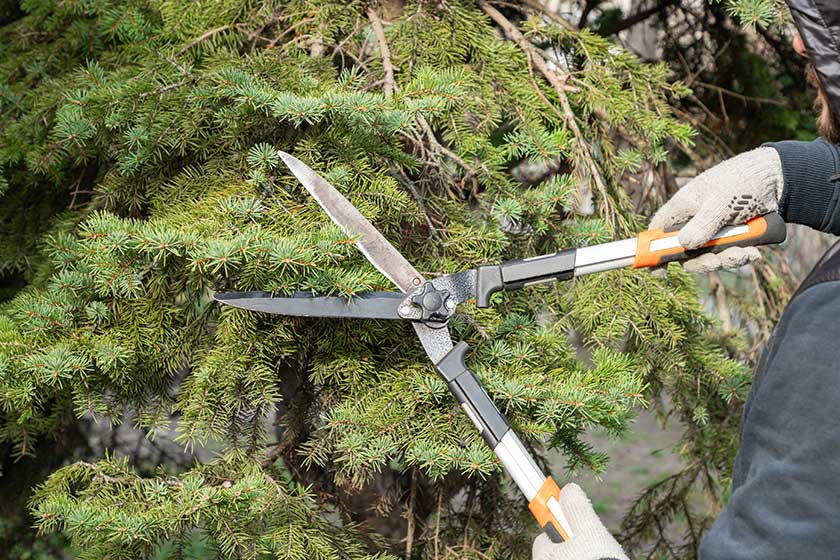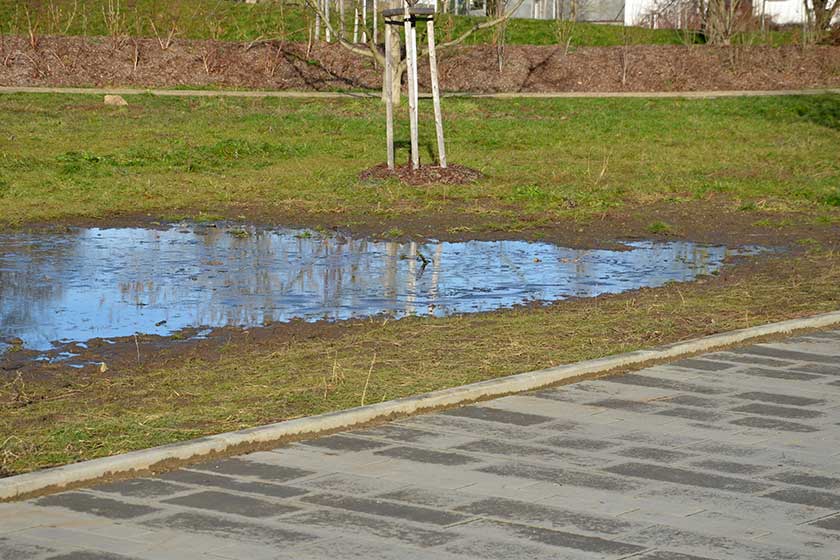Maintaining your trees is an important part of keeping your outdoor space healthy and aesthetically pleasing. One question that often arises is: When is tree trimming season? Trimming your trees at the right time can have a huge impact on their growth, health, and appearance.
In this blog post, we’ll explore the ideal seasons for trimming various tree species, the benefits of proper trimming, and how to approach the task.
The Best Time for Tree Trimming
Tree trimming season varies based on the type of tree and your climate zone.
In general, the right time to trim trees is during their dormant period. It usually falls between late autumn and early spring. This is when the tree’s growth slows down, and trimming during this time reduces the risk of damage. Dormant trimming allows the tree to heal quickly before it starts its growth cycle in spring.
- Deciduous Trees
Deciduous trees are those that lose their leaves every fall. For these trees, late winter or early spring is usually the best time for trimming.
During this period, the tree is dormant and not actively growing. Trimming during dormancy reduces the chances of bleeding sap, which can weaken the tree. It also minimizes the chances of attracting pests or diseases. Many insects and pathogens are less active during the winter months.
In warmer climates, where trees may not experience harsh winters, you can still trim deciduous trees during cooler months. However, it’s best to avoid trimming during the growing season. This is because trimming when the tree is actively growing can lead to increased sap flow and stress the tree, which could stunt its growth.
- Evergreen Trees
Evergreen trees, which keep their leaves (or needles) year-round, have different trimming needs than deciduous trees. The best time to trim these trees is typically during the late winter to early spring period. This is when they are also dormant. However, the advantage here is that you won’t have to worry about losing leaves that could expose the tree to harsh conditions or pest problems.
In general, avoid trimming evergreen trees during the summer months. This is when they are actively growing and cutting branches could stress the tree. This makes it more vulnerable to disease or poor growth.
- Fruit Trees
Fruit trees require a bit more attention when it comes to trimming. Trimming your fruit trees in the right season can lead to better fruit production and healthier growth.
The ideal time to trim fruit trees depends on the type of fruit they bear. However, in most cases, late winter to early spring is a good time to trim fruit trees before they start growing new shoots.
If you want to encourage fruit production, it’s necessary to know when your tree blooms. Trees that flower before leafing out, such as cherries or peaches, should be trimmed immediately after flowering. On the other hand, trees that bloom after the leaves are fully grown, like apples or pears, should be pruned in the winter or early spring.
- Flowering Trees
Flowering trees, like dogwoods and magnolias, need a careful approach to trimming. When is tree trimming season for these types of trees? It is best to prune them just after they finish flowering.
If you trim these trees too early, you might remove buds that will bloom in the coming spring. For most flowering trees, avoid heavy pruning during late fall or winter. The cuts may lead to injury, frost damage, or poor growth.
Pruning after blooming ensures you won’t cut off potential blossoms. It helps to keep your tree healthy by removing dead or damaged wood. Light trimming can also improve air circulation and reduce the risk of diseases that tend to affect flowering trees.
Why Timing Matters
Timing plays a huge role in how well your tree responds to trimming. Pruning at the wrong time can cause more harm than good.
For example, trimming your tree in the spring before new growth can result in weak or stunted growth, as the tree diverts its energy to healing rather than growing. In addition, trimming when trees are actively growing can make them more susceptible to disease, pests, and even weather damage.
On the other hand, trimming during the dormant season allows your tree to focus on healing without having to deal with the stress of new growth. You’re giving the tree a better chance to grow in a controlled and healthy manner when spring rolls around by removing dead or diseased branches.
Proper trimming helps maintain the shape and structure of your tree, which in turn helps it to grow properly. It also reduces the risk of damage caused by broken branches, particularly after heavy storms or during the winter months.
The Benefits of Tree Trimming
Regular tree trimming brings a variety of benefits. Aside from promoting healthy growth, trimming improves the overall appearance of your tree. Well-maintained trees are more visually appealing and can add curb appeal to your property. In addition, tree trimming can improve the safety of your yard by removing dead branches that could potentially fall and cause injury or damage.
Trimming also improves airflow within the tree and allows sunlight to reach more parts of the tree. This can help reduce the risk of fungal infections or disease, which thrive in areas with poor air circulation. Additionally, trimming encourages new growth by removing old, overgrown branches and allowing the tree to focus its energy on developing healthier, stronger branches.
Lastly, tree trimming can enhance the structural integrity of your tree. You’re allowing the tree to grow more evenly by removing branches that could interfere with each other. This makes it stronger and less prone to breakage or damage during storms.
Why Professional Tree Trimming Matters
While trimming trees might seem like a simple task, there are many factors to consider when performing it correctly. For one, improper cuts can leave trees vulnerable to disease and pests. It’s important to approach the task with care and precision. Knowing when and how to trim your trees can make all the difference in the health and longevity of the tree.
When trees are trimmed at the wrong time, they can experience stress, weakened growth, or even death. Proper trimming guarantees that your tree will heal quickly and continue to grow strong.
For example, trimming during the wrong season can encourage excessive sap flow. This makes the tree more prone to infection and pest infestations. Understanding the specific needs of different tree species and adapting your trimming schedule accordingly is key to maintaining your tree’s health.
Hiring a professional tree trimming service guarantees the job will be done correctly. Experts in tree care are skilled in recognizing what types of cuts are needed and when. This guarantees the tree remains healthy and structurally sound. Moreover, professionals use the proper equipment and reduce the risk of injury or damage to your tree.
How Covenant Landscapes Can Help
Covenant Landscapes knows how important it is to trim your trees at the right time and in the right way. Our team of experts is ready to help you maintain the health and beauty of your trees. We have years of experience working with a wide variety of trees and are familiar with the best practices for trimming each type.
We understand that tree trimming can be a daunting task for homeowners. This is why we’re here to take the stress out of it. Whether you need routine maintenance or a larger-scale trimming project, we’ll handle it professionally. Our goal is to improve the appearance and health of your trees so they remain strong and vibrant for years to come.
If you’re ready to make your outdoor space shine, reach out to us at Covenant Landscapes. Let us help you trim your trees properly and maintain a healthy, beautiful landscape.
Contact us today to schedule your tree trimming service and enhance your property’s curb appeal!



